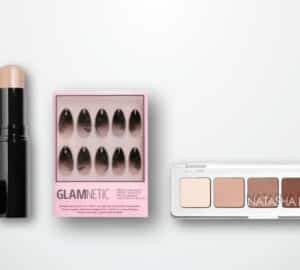We spend a lot of time thinking about wrinkles—from the crow’s feet around our eyes to the furrows that form between our brows. While they are a sign of aging, fine lines and wrinkles also can be a reflection of a life lived well—from the sorrows and stresses we’ve overcome to the joy and laughter we’ve enjoyed. We’ve got the details on types of wrinkles, what can cause them and how to slow them.
static vs. dynamic
Wrinkles and fine lines generally fall into two categories: static and dynamic. Static wrinkles occur as we age due to the loss of elasticity in our skin that naturally occurs. Gravity takes over, causing the skin to droop and crease. An example is wrinkles that form alongside jowls. Dynamic wrinkles are caused by repeated facial movements. For example, if you frequently drink from a straw, the regular pursing of your lips could lead to the formation of fine lines. Dynamic wrinkles can become static wrinkles over time. For example, crow’s feet are caused by muscle contraction, but their appearance deepens with the loss of elastin and collagen in the skin that comes with age.
the lines of our lives
- Worry lines: Eyebrows are responsible for many nonverbal cues, so the forehead is a common place to form dynamic wrinkles. Worry lines typically run horizontally across the top of T-zone. They are often formed by expressions of worry, shock and anxiety. They also can form vertically between the eyebrows.
- Bunny lines: These fine lines appear diagonally and vertically on the bridge or either side of the nose. They are caused by repeated contractions of the nasalis muscle, such as when squinting
or laughing. - Crow’s feet: Also known as lateral canthal lines, these fine lines form on the outer corners of your eyes. They are caused by tiny muscles contracting in the outer corner of your eyes as you make facial expressions related to a wide variety of emotions, such as joy, stress and sadness. Crow’s feet usually start as noticeable lines that form when smiling or squinting, and over time, they become visible even when the face is at rest.
- Laugh lines: As we age, our nasolabial folds become more prominent. These are creases that extend from both sides of your nose to the corners of your mouth. While they are often called laugh and smile lines, their prominence is usually not related to repeated expressions of joy, although that can create creases. Instead, it’s more often related to volume loss in the cheeks and reduced collagen and elastin in the skin—both natural effects of aging. Weight gain and dental problems can also cause the nasolabial folds’ appearance to deepen.
- Lip lines: Medically known as perioral wrinkles, these lines form vertically around the perimeter of the mouth. They are caused by activity of muscle around the mouth, such as with pursing the lips, and with age, the appearance of the lines can deepen. Lifestyle factors like smoking, sun damage and alcohol consumption also can affect lip lines.
- Marionette lines: These creases extend from the corners of your mouth to your chin. The name comes from the similarity in appearance they share with the vertical lines in the same area on dolls, dummies and marionettes that have moving mouths. They are a natural part of aging, but their appearance can be exacerbated by sun damage, smoking and stress.
a wrinkle-reducing lifestyle
No, to reduce the appearance of wrinkles later in life, you don’t have to avoid making any facial expressions that might contract a muscle around your eyes and lips. Skin damage that could lead to earlier or more prominent wrinkles can be thwarted. Along with a good skin care routine (don’t forget sunscreen!), here are some simple changes you can implement.
- Eat a healthy diet.
- Reduce sugar intake.
- Stay hydrated.
- Lower alcohol consumption.
- Don’t smoke.
- Exercise more.
- Improve your sleeping habits.
- Reduce stress.








